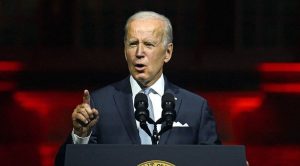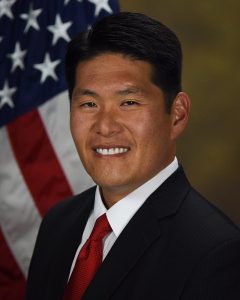President Joe Biden on Friday said that the United States had made historic progress to pull out of the worst crisis in 100 years and add 850,000 new jobs in June. Biden’s statements came as various sectors, especially hospitality and education, reported massive hirings.
As per the Labour Department, the monthly report reported better numbers than expected. Job creation in April and May was disappointing. However, with 850,000 new jobs in June, the United States has added 3.3 million jobs in the first six months of the year.
Also read: Bagram base officially handed over to Afghan defence ministry: Spokesperson
“This is historic progress, pulling our economy out of the worst crisis in 100 years. Our economy is on the move and we have Covid-19 on the run,” Biden said, acknowledging there is more work to do, at the White House.
The key factors behind the job creation and eventual revival of the world’s biggest economy were the massive American Rescue Plan approved in March and the rapid acceleration of vaccinations, according to Biden.
However, it was not all good news for the US on Friday. The unemployment rate last month ticked up to 5.9 % from 5.8 % in May, the data showed. The jobless rate for Black workers rose a tenth of a point to 9.2 %.
Also read: 4th of July: Day when United States of America became independent
Commenting on the report, economist Joseph Brusuelas of RSM US noted on Twitter: “We remain 6.8 million jobs short of where we were in Feb 2020. Still 5 million short in services, so that is where the focus will be going forward.”
According to the monthly report, the hospitality sector – hotels and restaurants – have reopened and hired at a rapid pace, adding 343,000 positions last month. The number is still short 2.2 million jobs from February 2020.
Another sector that reported positive numbers was education. State and local government level reported hiring for 230,000 positions. Manufacturing gained 15,000, but construction lost jobs.
Also read: Boeing 737 cargo makes emergency landing in Honolulu, both pilots rescued
“While today’s report was shy of the coveted 1-million mark, it paints a picture of a steadily recovering jobs market,” said Lydia Boussour of Oxford Economics.
While she noted that many companies continue to report difficulties finding people to fill open positions, she said the strong performance “is likely the start of a series of stellar reports that will underpin the strongest US economic performance since 1951 this year.”
The labor shortage also is driving wages higher, with average hourly earnings rising by 10 cents to $30.40 in June, following larger increases in May and April, the report said.
Biden said that dynamic tips the balance of power in favor of workers and “gives them the power to demand to be treated with dignity and respect.”
“More jobs, better wages. That’s a good combination,” he said.
But the struggle to find workers as businesses reopen has become a political issue, with Republicans blaming the generous federal jobless benefits as keeping potential hires on the sidelines.
Also read: US sprint sensation Richardson tests positive for marijuana, could miss Tokyo
As a result, 22 state governments have terminated supplemental unemployment benefits early and another four states have announced plans to follow suit, although some face legal challenges. The extra benefits expire in September.
While the rising jobless rate is viewed as bad news, in a recovering economy it is generally an indication that discouraged workers are more upbeat about their job prospects and have come off the sidelines to look for work.
Robert Frick of Navy Federal Credit Union downplayed the rising jobless rate and said there are signs of good news ahead.
“The unemployment rate nudged up because more Americans are seeking jobs, and good employment gains for teachers will have a multiplier effect in the next few months, as that allows kids to go back to school and frees over a million parents to return to work,” he said of the data.
Also read: Pakistan among 14 countries on US’ child soldier recruiter list
Meanwhile, the broadest measure of joblessness fell below 10 percent for the first time since the start of the pandemic.
That “U6” rate — which includes those who work part-time because they cannot find full-time work, as well as discouraged workers who are not looking for a job — peaked at just under 23 percent in April 2020.
Still, the figures showed some mixed results as the ranks of the long-term unemployed — those jobless for 27 weeks or more — rebounded after declining in May.
And employment in the auto sector fell by more than 12,000, which economists say is linked to the global semiconductor shortage that has hindered production, as well as annual summer factory shutdowns.





